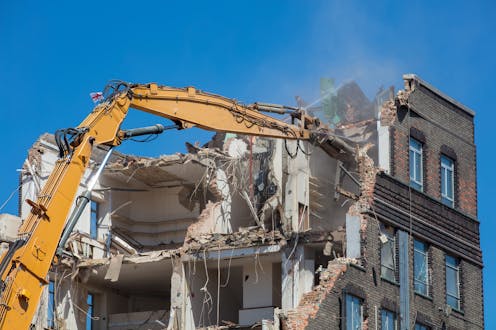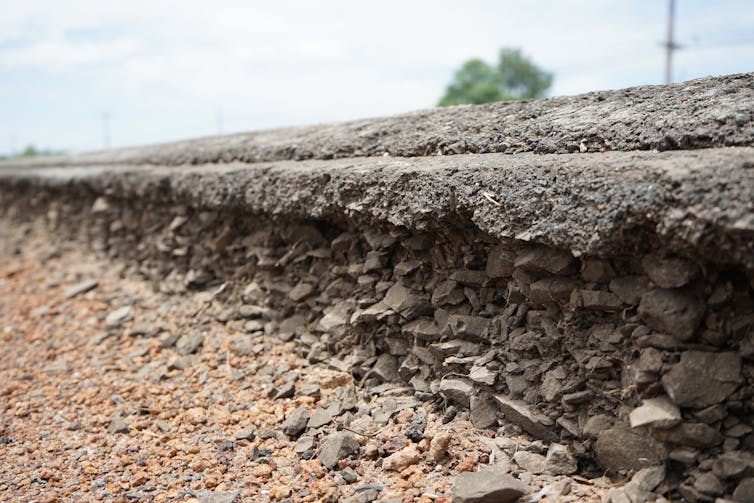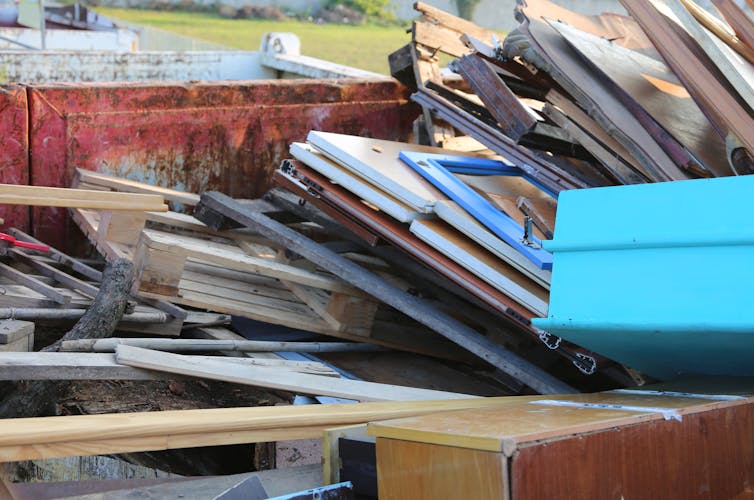
The construction industry is not on track to decarbonise by 2050 and uses more resources than most. In 2020, the UK produced a staggering 59.1 million tonnes of non-hazardous construction and demolition waste. Despite most of this material (92.6%) being recycled, much of it was crushed for use in roads and building foundations.
Why is this a problem? Downcycling, as opposed to upcycling, turns high-quality materials into lower-quality products by crushing and mixing them, preventing future use in their original form.
Increasing the demand for natural resources and continuously exploiting raw materials is unsustainable. The alternative is to reuse, repair or repurpose materials already in use. But for this to happen, buildings would need to be carefully taken apart – and their materials kept at their highest possible value.

Recycling often compromises the original properties and quality of a material. The result is that window frames, glass and bricks that could be reused end up in a landfill. For example, a structural beam can be dismantled and installed in another building. The same goes for window frames. Clay bricks can be reused instead of being crushed and recycled as an aggregate material.
Downcycling uses energy and resources to transform materials, increasing how much carbon is embedded in a construction project. Prioritising the reuse of existing materials over recycling can significantly reduce embodied carbon – and the construction sector’s carbon footprint.
Of all the buildings likely to exist in 2050, 80% have probably already been built according to one estimate. Meeting net zero targets will require these buildings to be renovated, with insulation and other measures that improve their energy efficiency. This process should preserve as many useful materials as possible.
Deconstruction over demolition
Think of buildings as material banks filled with reusable components for future construction. Deconstructing buildings instead of demolishing them – carefully disassembling and salvaging their materials for reuse – can repurpose much of what would otherwise be waste.
This strategy has been adopted in different countries. Since 2015, the French government has launched several laws and incentives favouring deconstruction. The Netherlands has a national programme aimed at halving the use of primary raw materials in the construction industry by 2030. Vancouver in Canada aims to reduce waste from construction and demolition and encourage the reuse of deconstruction materials. The city of Oakland in California established a deconstruction requirement that ensures that salvageable materials are identified and removed for reuse instead of being recycled or sent to landfill.
The problem, as Dutch architect Thomas Rau defines it, is that waste is a material with no identity. Categorising materials is necessary to salvage them and recognise their potential for reuse.
Existing buildings are treasures
Imagine if each material in a building had an ID: a material passport consisting of a physical label linked to a database. For example, a glass panel might have a product passport composed of different material passports relating to the materials used to make it (sand, soda ash an limestone).
A door without a material passport might go to waste. The same door with an ID has its physical dimensions, materials, manufacturer information and product details documented. Such a system could prevent these valuable materials being lost or wasted and enable their reuse as a valuable item.

The door could then be deposited in a take-back scheme, remade according to its details or simply reused straightaway. Assigning an identity to existing materials helps designers understand their physical, social and environmental value and understand their potential. In essence, these passports prevent materials from becoming an undifferentiated mass of waste, extending their lifespan and preventing their disposal.
Old buildings are more than just relics of the past, they are treasures waiting to be salvaged. Creating passports for building materials, before they are dismantled, allows them to be identified, traced, and kept in use instead of being thrown away.
Buildings and materials have not just one life, but the possibility of several.

Don’t have time to read about climate change as much as you’d like?
Get a weekly roundup in your inbox instead. Every Wednesday, The Conversation’s environment editor writes Imagine, a short email that goes a little deeper into just one climate issue. Join the 30,000+ readers who’ve subscribed so far.
Ana Rute Costa received funding from Arts and Humanities Research Council (AHRC) and Innovation Scholars Programme (Grant AH/X005143/1)
Rabia Charef is a consultant.
This article was originally published on The Conversation. Read the original article.







